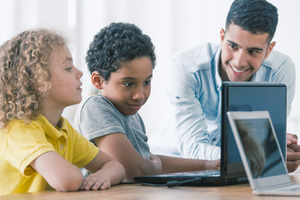How to Choose the Right Book Marketing Company for Your Genre
Not all book marketing companies are created equal. Choosing the appropriate fit is like choosing a reliable companion because everyone has unique strengths and areas of expertise. A staff that works in harmony with your vision and has your best interests at heart is what you should be looking for, providing recommendations that you find compelling.
When looking for affordable book marketing services, it’s important to keep six important factors in mind, even though grandiose promises can be tempting. These are guiding criteria that make sure your decision fits in perfectly with your literary dreams and ambitions.
Identify your goals
Before hiring a marketing company, it’s crucial to define your goals clearly. Instead of vague objectives like “increasing sales,” focus on actionable items such as “boosting visits to my e-commerce store” or “lowering cart abandonment rates.” Setting specific goals and key performance indicators (KPIs) will not only aid in selecting the right marketing company but also in measuring its success over time.
According to Travis McKnight, content strategy architect at Portent, the choice of marketing team depends on the business owner’s end goals. For instance, if the goal is to create a functional website, an elaborate team may not be necessary. However, for objectives like increasing conversions, a team with greater expertise and adaptability is essential.
Research Book Marketing Services Companies
Once you’ve outlined your marketing needs and objectives, the next step is to research book marketing companies. Begin by focusing on those specializing in author and publisher assistance. Assess their service offerings, fees, and customer feedback. While guarantees or promised engagement levels may catch your eye, proceed with caution. Ensure you understand the specifics behind these assurances.
For instance, if a company claims they’ll promote your book to 30,000 Twitter accounts, inquire about the nature of these accounts and how they plan to achieve this. Understanding these details beforehand is crucial, as vague guarantees may yield little to no impact on your book’s visibility. Ultimately, specificity is key for guarantees to hold genuine value, so it’s essential to clarify all aspects before making a commitment.
Verify Their Reputation
Check a book marketing service’s reputation and read what other writers or publishers have to say about them before deciding on one. To find out if the services they offer live up to the hype, read through evaluations from previous clients and seek out any comments. To obtain objective advice, you can also consult with authorities in the field and other reliable sources. It’s critical to understand the experiences of others in order to make an informed choice.
Consider Their Specialties
Before selecting a book marketing service, consider their areas of expertise to ensure they align with your goals. Some services focus on specific genres like business or romance, while others specialize in different types of books such as fiction or non-fiction. It’s important to choose a marketing agency that has experience working with books similar to yours.
Additionally, understand their operational approach. While some agencies may require monthly retainers, others may offer different payment structures. Be sure to clarify their pricing, methods, and what services are included before making a decision. This ensures you find the best fit for your needs and budget.
Read the Contracts
It’s not enjoyable to read contracts. By which I mean, when was the last time you went through the iPhone’s terms of service? Like most individuals, you most likely haven’t. Contracts, however, differ for services related to book marketing. If there are any guarantees, be careful to acquire them in writing and with specificity. If there is a deliverables list, make sure it is included in the proposal or contract you are signing. It should contain all the information about the deliverables they are offering.
Secure Long-Term Support Services
When selecting a book marketing service, it’s essential to inquire about the additional support they can offer beyond initial promotions. This includes services such as securing more influencers to share your book, optimizing your presence on Amazon, continuing with Amazon ads, and running promotions on platforms like Goodreads or BookBub.
Once you’ve identified a company you’re satisfied with, consider maintaining a long-term partnership with them. Since book marketing companies vary widely, it’s crucial to spend time on the phone with them, ask insightful questions, and, most importantly, ensure that all agreements are documented in writing. This ensures clarity and transparency in your partnership with the book marketing company.
Why Prioritize Marketing Expertise?
Book marketing agencies offer authors targeted audience engagement, tailored strategies, multi-channel promotion, data-driven decisions, and long-term brand building. They conduct market research to reach specific audiences efficiently, craft strategies aligned with book themes, utilize various platforms for promotion, analyze data for optimization, and focus on building lasting author-reader connections. Working with book marketing companies ensures authors receive comprehensive support in reaching their audience and establishing a strong author brand.
Final Words
Publishing a book is indeed a notable accomplishment, yet its success hinges largely on effective marketing. It’s essential to prioritize marketing over publishing to ensure your book reaches its audience, builds a strong author brand, and sustains long-term success. Hiring book marketing companies specializing in marketing, not just publishing, is paramount for achieving these goals efficiently. Remember, selecting the right book marketing agency can be cost-effective, while choosing an inexperienced one may prove costly in the long run.
FAQs
Why use professional book marketing companies?
Authors can receive customized plans from professional book marketing services that are intended to increase visibility and boost sales. A variety of promotional techniques are covered by these strategies, such as book tours, email campaigns, social media marketing, and advertising placements.
What is the difference between book marketing and book publicity?
The easiest way to distinguish between marketing and publicity in situations where they are presented as two separate categories is to say that marketing refers to promotional activities that the publisher finances and (for the most part) oversees, while publicity refers to tactics used to persuade other individuals, groups, and publications to use their resources to promote the book.
What is a book marketing campaign?
To put it simply, book marketing is the amalgamation of techniques used by writers to reach their target audience and increase book sales. Many authors create a marketing strategy that they will stick to during their launch by using a variety of marketing techniques.












